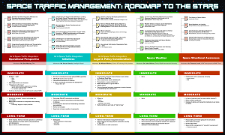Three-Dimensional GIS Query and Analysis for Suborbital Space Flight Support
Abstract
The ability to efficiently query, analyze, and make real-time decisions based on enormous amounts of geospatial data requires sophisticated software such as that provided by a Geographic Information System (GIS). This paper examines GIS training and techniques that can incorporate aeronautical charts and other airport information into a GIS that allows the different airspace classes to form 3-D images depicting their exact dimensions and arrangements. Scenarios of individual approaches, runways, and surrounding infrastructure can be zoomed and rotated in 3-D for optimal viewing. Situational awareness is greatly enhanced by these capabilities, which enable pilots and crew members to better comprehend the complexities of a particular airport, its accompanying airspace, and landing trajectories. Global Positioning System (GPS) data also can be integrated into the GIS, whereby a suborbital space flight can be tracked and plotted in a 3-D environment for visualization. Flights can later be debriefed allowing the crew and support team to replay and analyze the flight from taxi to touchdown. Most importantly, in the event of a return flight diversion, GIS enables the crew to rapidly assess the available alternatives within range and view the airspace and airport in 3-D before committing to the actual approach. Public agencies and private industries at all levels are using GIS technology as a vehicle to create linkages between the diverse disciplines associated with aerospace to maximize the resulting synergy.
Three-Dimensional GIS Query and Analysis for Suborbital Space Flight Support
The ability to efficiently query, analyze, and make real-time decisions based on enormous amounts of geospatial data requires sophisticated software such as that provided by a Geographic Information System (GIS). This paper examines GIS training and techniques that can incorporate aeronautical charts and other airport information into a GIS that allows the different airspace classes to form 3-D images depicting their exact dimensions and arrangements. Scenarios of individual approaches, runways, and surrounding infrastructure can be zoomed and rotated in 3-D for optimal viewing. Situational awareness is greatly enhanced by these capabilities, which enable pilots and crew members to better comprehend the complexities of a particular airport, its accompanying airspace, and landing trajectories. Global Positioning System (GPS) data also can be integrated into the GIS, whereby a suborbital space flight can be tracked and plotted in a 3-D environment for visualization. Flights can later be debriefed allowing the crew and support team to replay and analyze the flight from taxi to touchdown. Most importantly, in the event of a return flight diversion, GIS enables the crew to rapidly assess the available alternatives within range and view the airspace and airport in 3-D before committing to the actual approach. Public agencies and private industries at all levels are using GIS technology as a vehicle to create linkages between the diverse disciplines associated with aerospace to maximize the resulting synergy.


